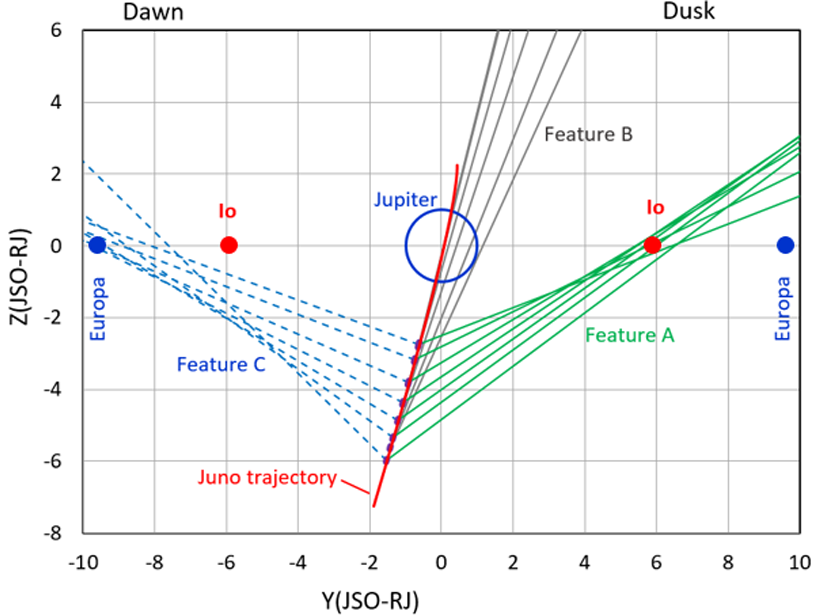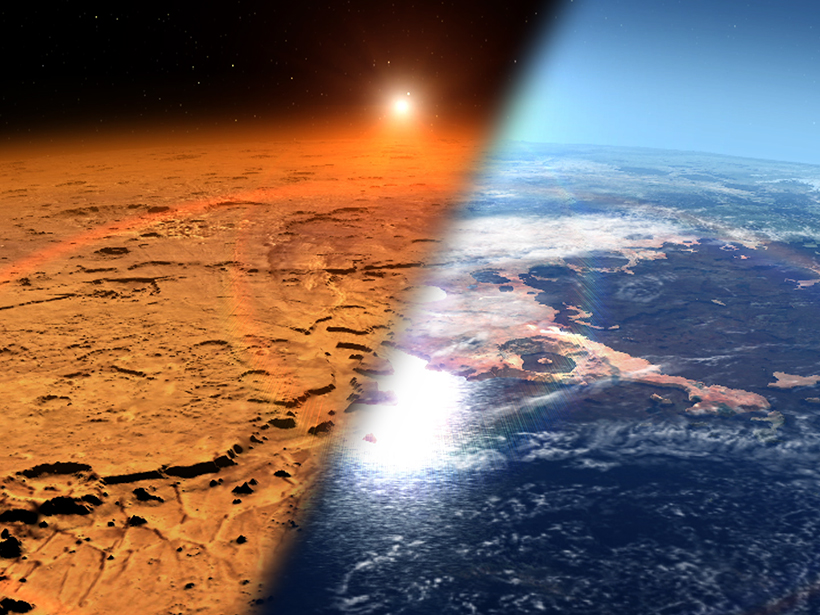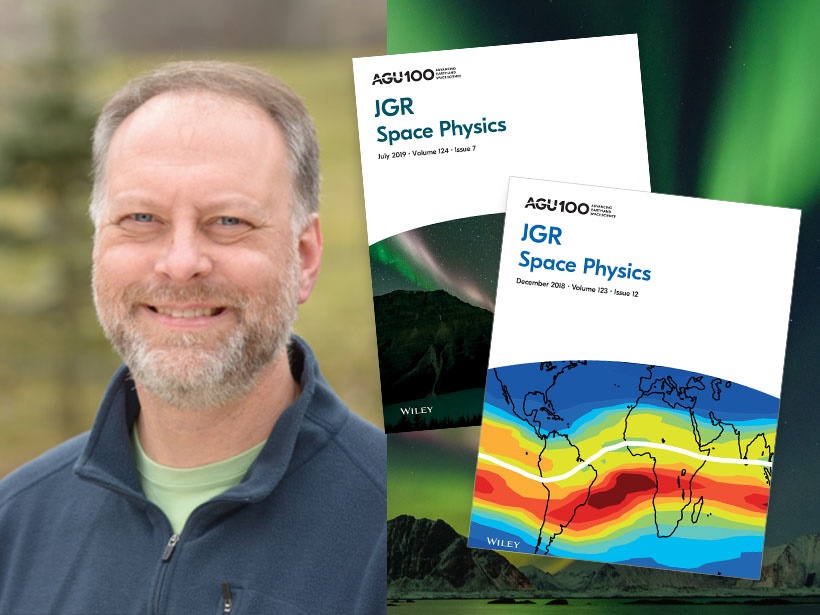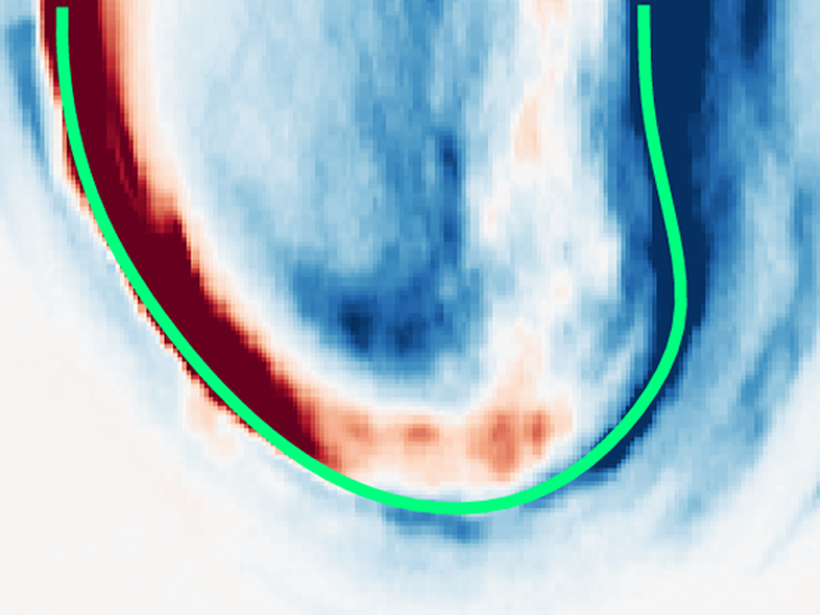The previous consensus that magnetic dips in the magnetosheath can be attributed to non-propagating mirror waves is now shown to be oversimplified.
Journal of Geophysical Research: Space Physics
Electron Density near Enceladus Shows Orbital Variation
The electron density peaks well after the activity of the moon’s distinctive south polar ice plume reaches its maximum, but the cause of the lag remains puzzling.
New Energetic Neutral Atom Emissions from Jupiter, Io, and Europa
The first Jovian off-equator Energetic Neutral Atom viewings reveal distinct emissions from Jupiter and the orbits of Io and Europa: Energetic particle injections surprisingly occur inside Io’s orbit.
JGR: Space Physics Seeks Submissions on Underrepresented Topics
Under a new editor in chief, the Journal of Geophysical Research: Space Physics is encouraging more scientific papers on space instrumentation, numerical models, and solar physics.
How Mars’s Magnetic Field Let Its Atmosphere Slip Away
A planet’s magnetic field usually protects its atmosphere from being blown away by its star. But new research suggests Mars’s weak magnetic field may have helped its atmosphere escape.
Six Years with JGR: Space Physics
The outgoing Editor in Chief of JGR: Space Physics reflects on his tenure and expresses his appreciation to all those who contributed to the success of the journal over recent years.
“Electron Wings” Can Interfere with Spacecraft Measurements
Spacecraft sometimes produce a form of electrical self-interference as they zip through plasmas in space—a previously unreported effect that may be lurking in old data sets.
Using a Machine to Help Us Learn About Jupiter’s Aurora
A first usage of principal component analysis on Hubble images of Jupiter’s auroral ovals reveals the most common patterns, and machine learning classification reveals their physical causes.
Charging Thunderclouds Affect Ionospheric Conductivity
As thunderstorm updrafts strengthen, electrification of clouds can heat the lower ionosphere, explaining prolonged disturbances to radio waves in the rarefied atmospheric layer.
Newly Discovered Electric Current System Very Close to Saturn
In the tightly confined region between the innermost ring and the planet’s upper atmosphere, the Cassini spacecraft observed signatures of a previously undetected current system.










